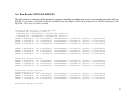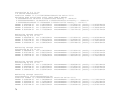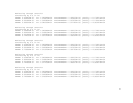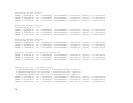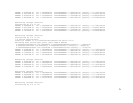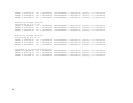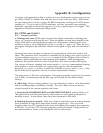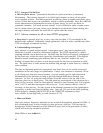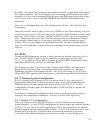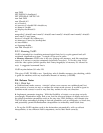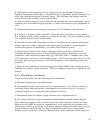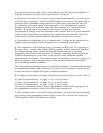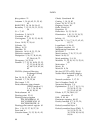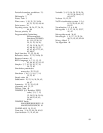rem PMX
SET DISPLAY=localhost:0
SET XFFILES=E:\MPTN\X11
rem End PMX
rem XFree86 4.2
set x11root=f:
set xserver=f:\xfree86\lib\xfree86.exe;
set home=f:\hobbs
set display=localhost:0.0
set
manpath=f:\xfree86\man\man1;f:\xfree86\man\man3;f:\xfree86\man\man4;f:\xfree86\
man\man7;f:\emx\man;
device=f:\xfree86\lib\xf86sup.sys
set termcap=f:/emx/etc/termcap.dat
set user=hobbs
set logname=hobbs
rem End XFree86 4.2
B.3.2. Running Vis5D
Vis5D is intended for visualizing meteorological data, but is a quite general and self-
contained visualization system. A couple of tips are in order:
a. Memory allowance Vis5D tries to be very sparing with memory, and this sometimes
causes it to refuse to execute commands (especially isosurface). To fix this, start Vis5d
with the -mbs option (which specifies how many megabytes of memory it’s allowed to
use). A suggested command line is
Vis5D mysimulation.v5d -mbs 128
This gives Vis5D 128 MB to use. Specifying -mbs 0 disables memory size checking, which
is good for machines with any reasonable amount of memory (>256MB).
B.4. Release Notes
B.4.1. Wish list:
a. Unidirectional mode sources. TEMPEST’s plane wave sources are unidirectional, but
point sources of course are not, so neither are POEMS mode sources. It would be great to
combine mode sources in such a way that they radiate in only one direction.
b. Implement parameter stepping. With the flexibility of POEMS, we can step not only
wavelength, illumination angle, and so on, but the sizes and shapes of objects and even
the global simulation parameters such as the step size, PML thickness, and domain size.
This will allow automated plotting of derived quantities such as efficiencies vs. block size,
and potentially permit Richardsonian extrapolation to unfeasibly small block sizes.
c. Fix up the VIS5D interface code to do decimation automatically, with or without
interpolation, to use different field components, and to label them correctly.
84




